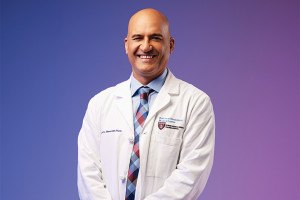One Doctor’s Perspective on Preventative Mastectomies

Angelina Jolie had a preventative double mastectomy. Photo via Shutterstock
Angelina Jolie shocked the celebrity gossip sphere this morning with a New York Times op-ed detailing the decision behind her February double mastectomy, a procedure she had done preemptively after discovering that she carries a gene, BRCA1, that predisposes women to breast cancer. In the piece, Jolie describes the pain of losing her mother to breast cancer, who died at age 56, and the desire to never put her children through the same thing.
Jolie explains in the article that her doctors estimated that she had an 87 percent risk of breast cancer and a 50 percent risk of ovarian cancer, leading her to take early action. She writes:
“Once I knew that this was my reality, I decided to be proactive and to minimize the risk as much I could. I made a decision to have a preventive double mastectomy. I started with the breasts, as my risk of breast cancer is higher than my risk of ovarian cancer, and the surgery is more complex.”
With this news, Jolie joins celebrities like Christina Applegate and Sharon Osbourne in taking preventative action against breast cancer, a decision that is becoming increasingly common. In her Times essay, Jolie encourages other women with similar cancer risks to also have the procedure, writing:
“I choose not to keep my story private because there are many women who do not know that they might be living under the shadow of cancer. It is my hope that they, too, will be able to get gene tested, and that if they have a high risk they, too, will know that they have strong options.
Life comes with many challenges. The ones that should not scare us are the ones we can take on and take control of.”
And while bringing attention to cancer awareness is always a good thing, Dr. Samuel J. Lin, a plastic surgeon at Beth Israel Deaconess Medical Center, cautions that, though mastectomies are relatively low-risk operations and there are several options for reconstruction, the decision to have the procedure is one that requires lots of thought and an individual conversation with doctors. “This is a discussion between the patient, the patient’s family, their treating physician, and also their OB-GYN,” Lin says. “There’s also geneticists involved. This is obviously a very big decision. It’s not taken lightly, and it takes time to come to that conclusion.”
Further, Lin says that though genes like BRCA1 do greatly increase the risk of cancer, the majority of women do not need the kind of genetic testing that Jolie had. “I would say most people do not need testing, just a certain percentage that have a strong family history of these cancers,” he says. “People don’t wake up all of a sudden and realize, ‘Gee, I should get tested.'”
That said, Lin, who praised Jolie’s bravery and decision to speak publicly about her procedure, says that the decision ultimately comes down to the patient. “The percentages are what they are, and you could be that one percent or you could be that 99 percent,” he says. “It’s all in what you think is the right thing to do, and/or counseling from your treating physician. That’s really the bottom line.”


